In what can only be described as a tactical masterclass, Chelsea shocked the football world by defeating Paris Saint-Germain in the Club World Cup final — a result that will go down as one of the most unexpected upsets in a final this season. PSG had dismantled elite sides like Liverpool, Arsenal, and Inter Milan en route to the title, scoring over nine goals without conceding. Chelsea, on the other hand, were widely expected to struggle. But under Enzo Maresca’s tactical leadership, they had other ideas. From Reece James’s pre-match confidence to Cole Palmer’s clinical execution, Chelsea delivered a near-flawless performance. So, how did they do it?
Chelsea’s Game Plan: Discipline Without Possession
Chelsea didn’t set out to dominate the ball — they set out to dominate the game. Their plan hinged on maintaining compactness, exploiting PSG’s aggressive pressing structure, and attacking with direct purpose. The key was control without possession: baiting PSG into committing numbers forward before striking into the spaces left behind.
The 5-3-2 Defensive Structure and Midfield Control
Chelsea lined up in a 5-3-2 out of possession, offering stability across the back and central congestion in midfield.
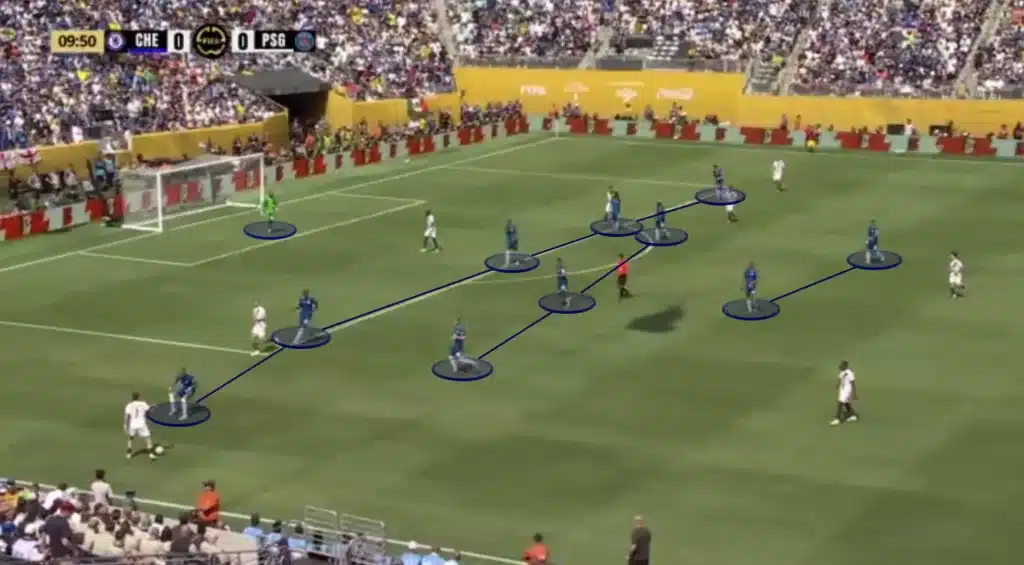
This setup allowed them to match PSG’s wide overloads while still crowding the central channels — a deliberate ploy to prevent PSG from progressing through the middle. The wingbacks matched PSG’s wide threats, while the midfield trio shifted intelligently to screen passes into the half-spaces and limit central combinations.
On the ball, Chelsea transitioned into a 3-2-5 with wingbacks pushing high and inside forwards creating vertical stretching. This shape allowed Chelsea to threaten quickly once possession was won — but more importantly, it drew PSG into traps.
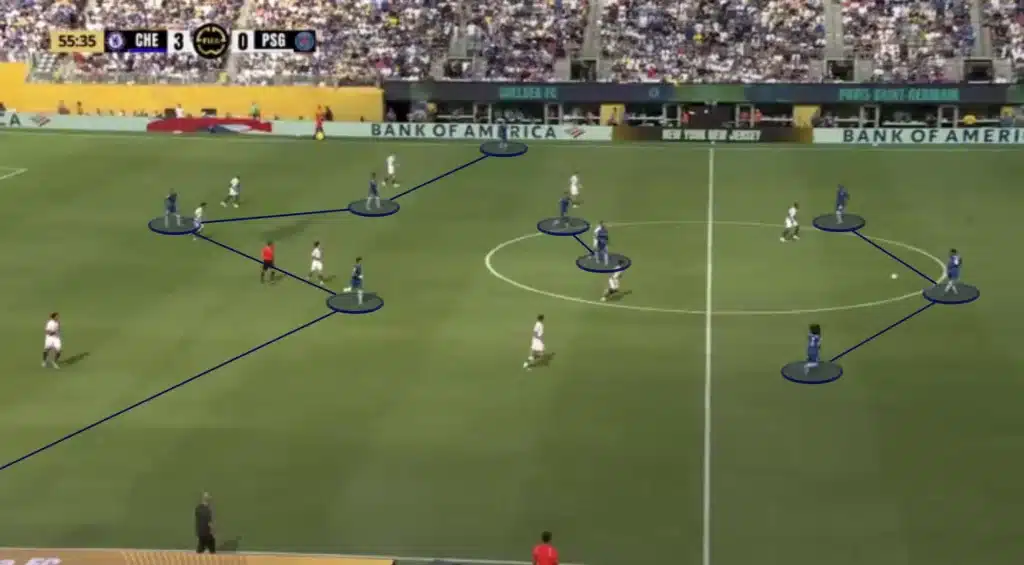
Turning PSG’s Press into a Liability
PSG’s pressing has been a defining strength this season — especially when playing without non-pressing forwards like Kylian Mbappé. However, Chelsea cleverly used this to their advantage. Their first goal came directly from such a moment.
After regaining the ball deep in their own half, Chelsea circulated possession backward toward goalkeeper Robert Sánchez, intentionally drawing PSG’s press. As Dembélé stepped up to press the keeper, Malo Gusto made an aggressive run from deep. Sánchez spotted the run and launched a direct pass over the top. Gusto beat his man in the air, continued his run into the box, and although his initial shot was blocked, he recovered the ball and squared it to Cole Palmer — 1–0 to Chelsea.
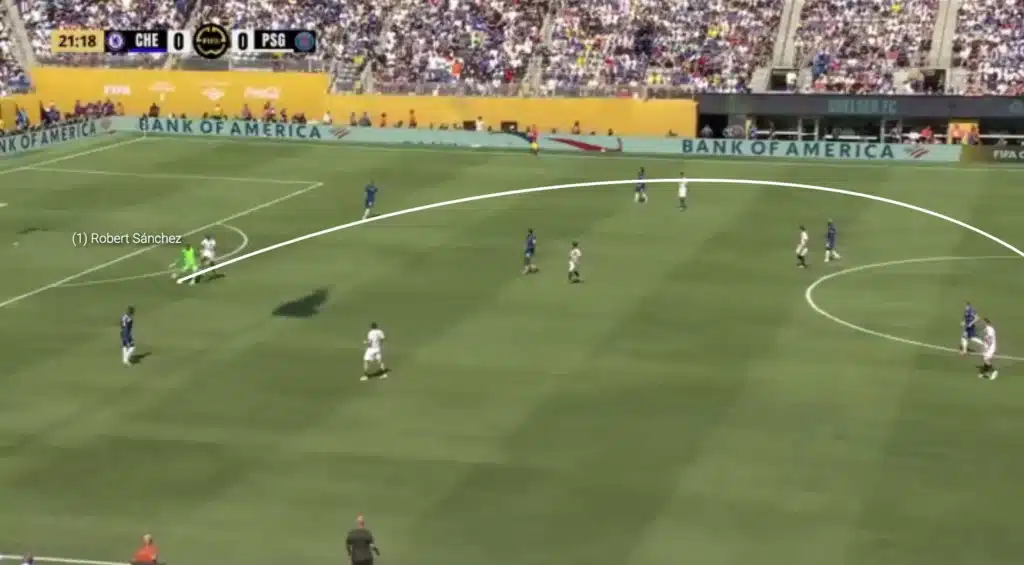
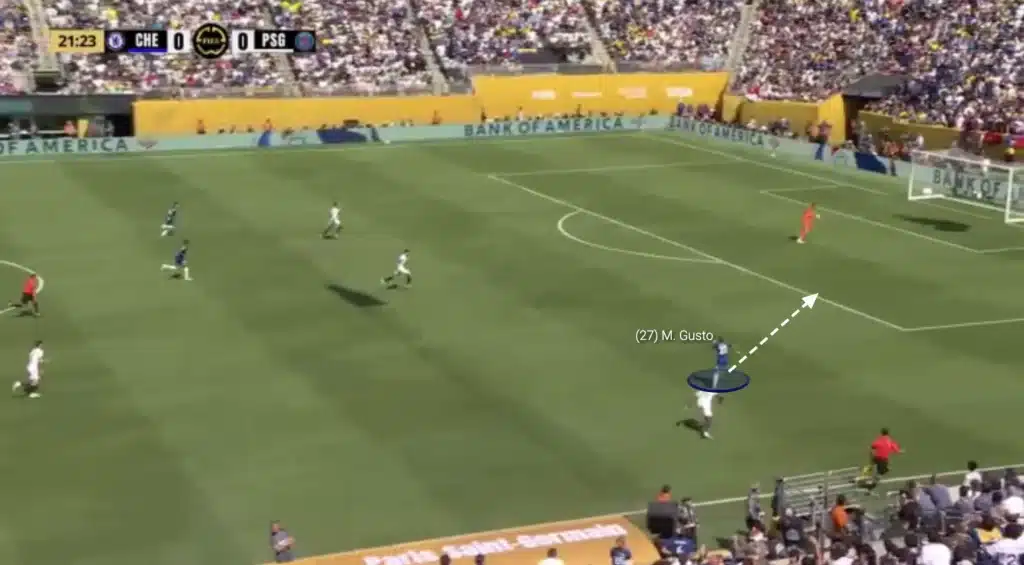
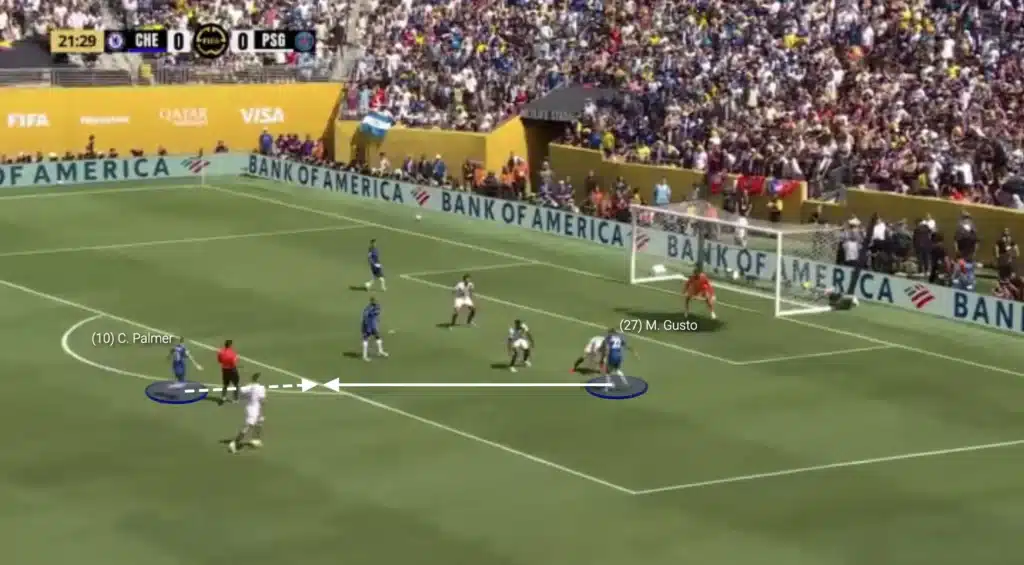
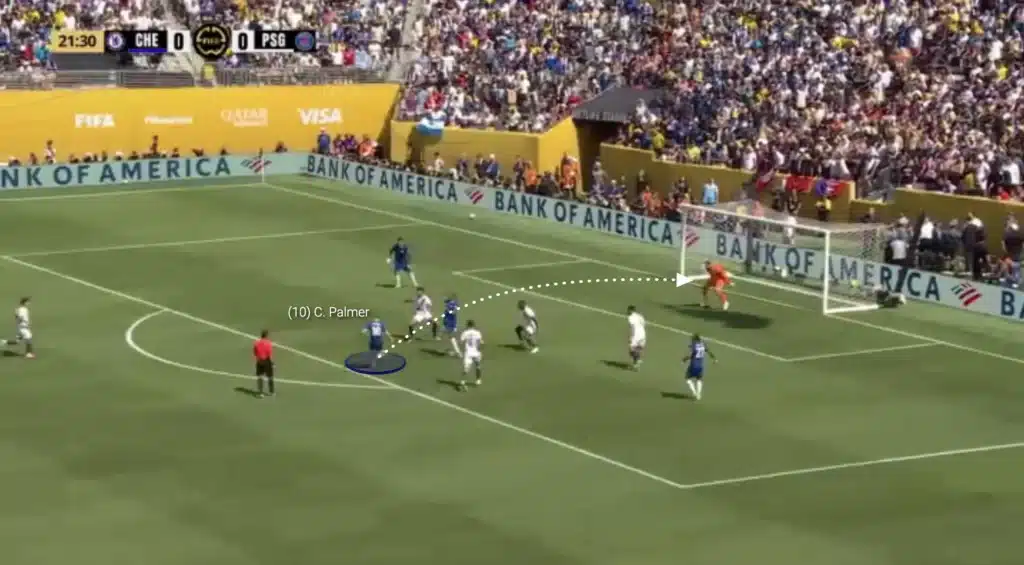
The trap had worked. PSG’s high press had left their backline exposed, and Chelsea exploited it ruthlessly.
Mid-Block Execution and Vertical Transitions
Rather than pressing high themselves, Chelsea opted for a well-structured mid-block. This allowed them to remain compact without being pinned in their defensive third — reducing PSG’s ability to create numerical advantages near the box. The midfield three remained tight and aggressive, stepping out to press once PSG entered Chelsea’s half.
The transitions were where Chelsea truly came alive. Once the ball was regained, they immediately looked for direct outlets, often playing the ball to a central midfielder who would trigger long balls into the wide channels or toward runners like João Pedro and Palmer. These sequences stretched PSG vertically, exposing the space between midfield and defense.
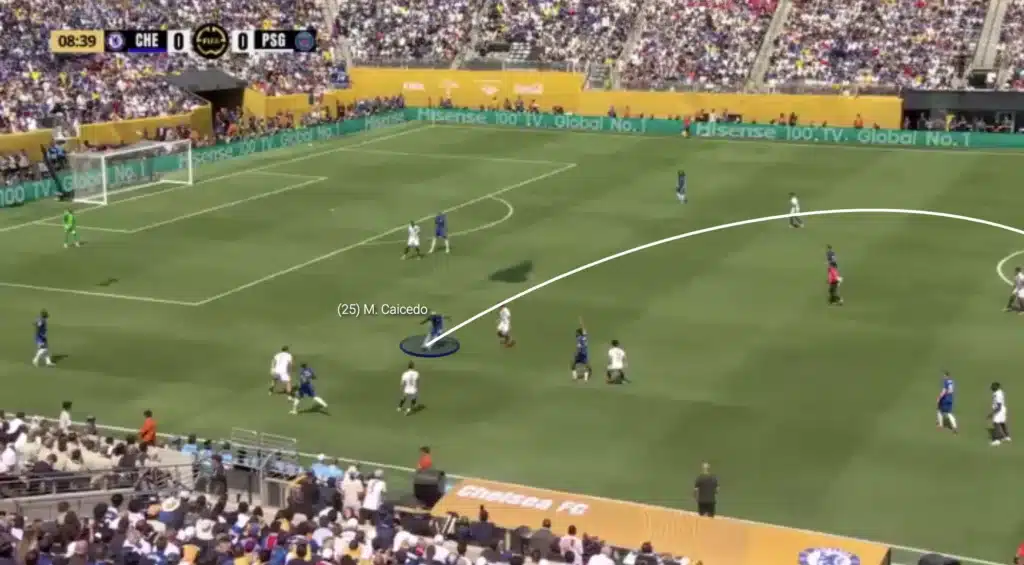
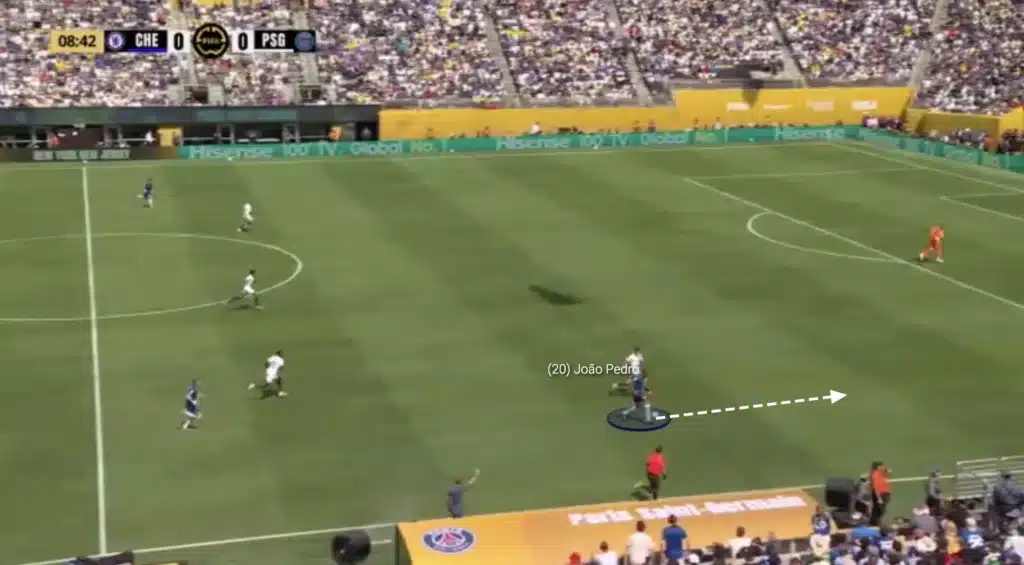
Rapid Counters and Wide Overloads: The Second Goal
Chelsea’s second goal exemplified their tactical precision. PSG had advanced into Chelsea’s half, but with back-pass options tightly marked, Nuno Mendes attempted a switch of play. Reece James anticipated it perfectly, intercepted, and quickly fed Enzo Fernández, who laid it off to Levi Colwill.
At that moment, Chelsea already had two runners in position — Palmer on the right and Neto on the left. The ball went long toward Palmer, who used João Pedro’s decoy run to cut inside.
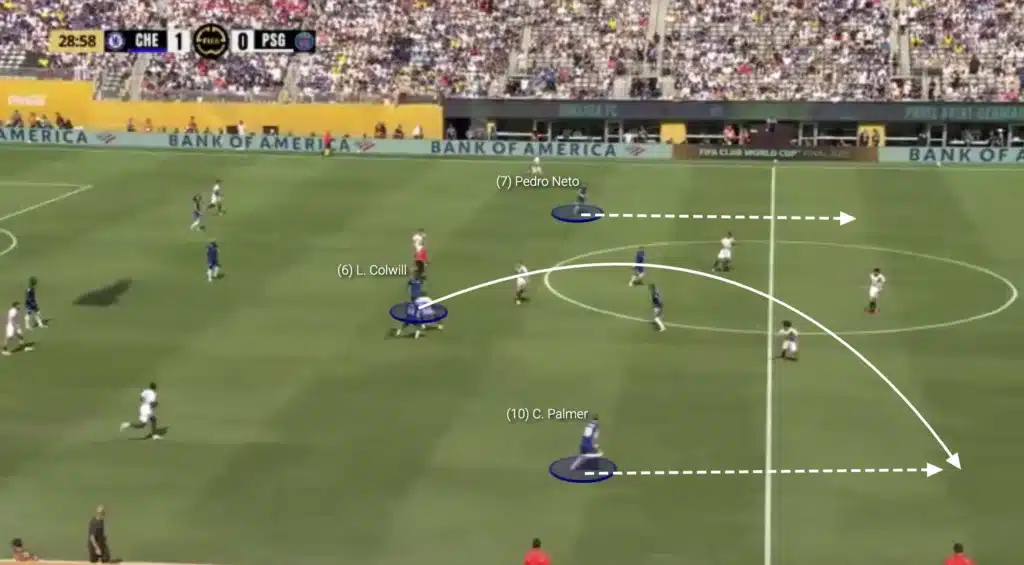
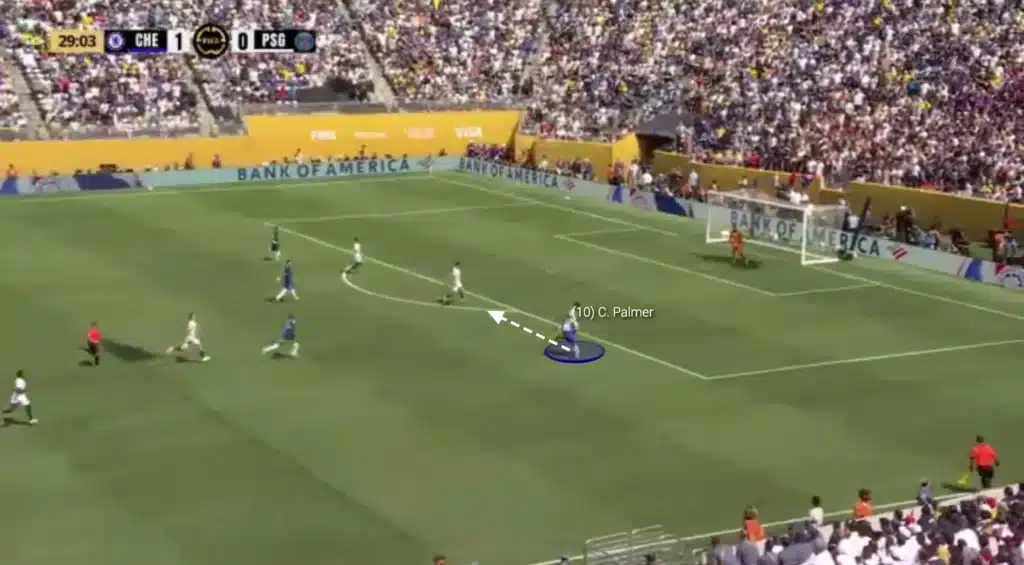
Palmer shaped to pass, froze the defender, then finished clinically to make it 2–0. The timing, spacing, and execution were textbook counter-attacking.
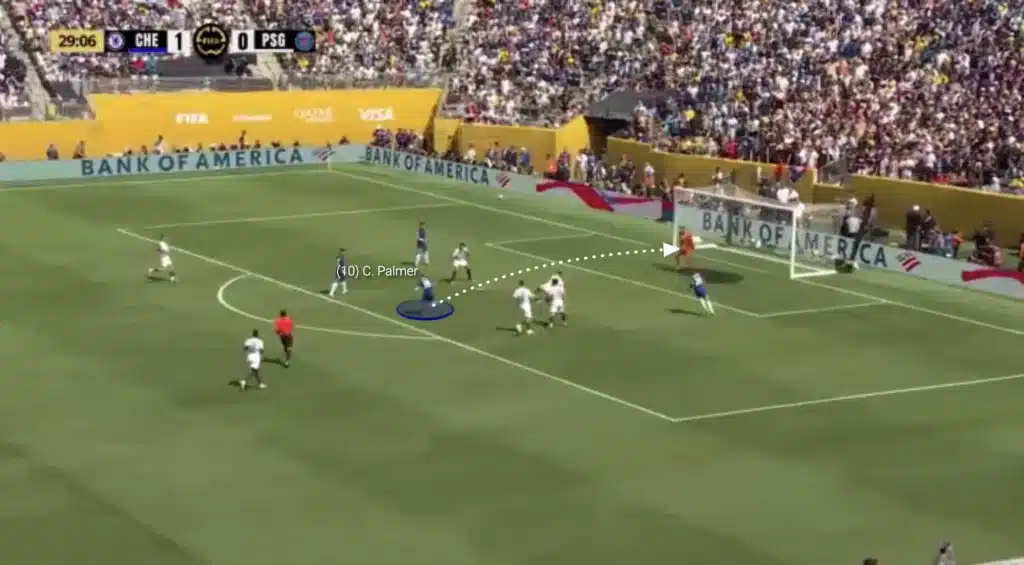
Flexible Positioning and Third-Man Movements
With PSG struggling to contain Chelsea’s direct play, they pushed Fabian Ruiz and João Neves higher to prevent passes into Caicedo and Fernández. Their wingers stayed wide, while Dembélé stayed high to press the center-backs and goalkeeper. This, however, gave Cole Palmer space to roam.
Palmer began dropping deeper between the lines, finding freedom as PSG’s midfield line was stretched. Gusto and João Pedro’s constant runs pulled defenders out of position, creating space for Palmer to receive and turn. One such moment led to the third goal: Palmer received in space, played a through ball for Pedro, who curved his run to lose his marker and finished 1v1 with the keeper — 3–0 before halftime.
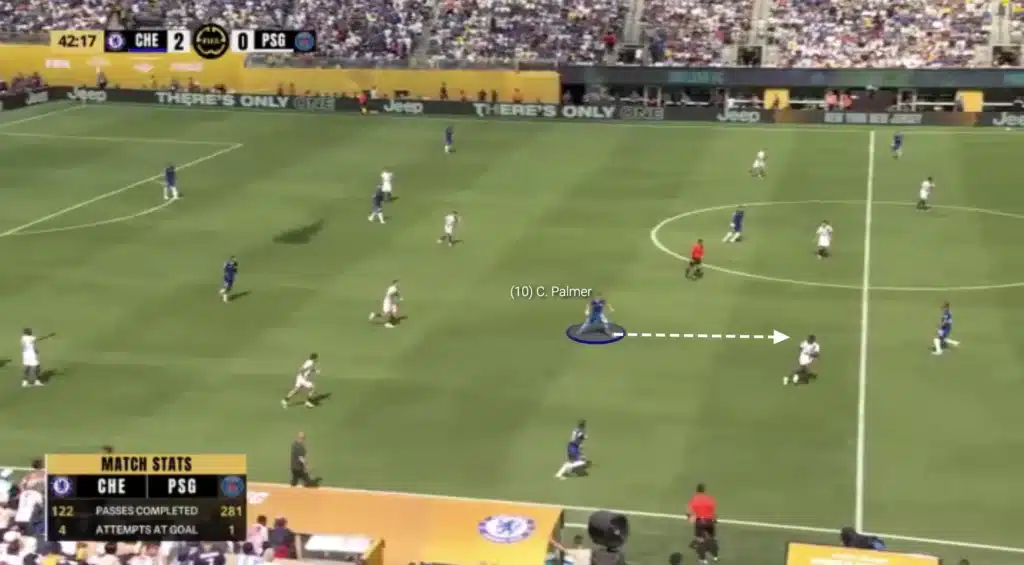
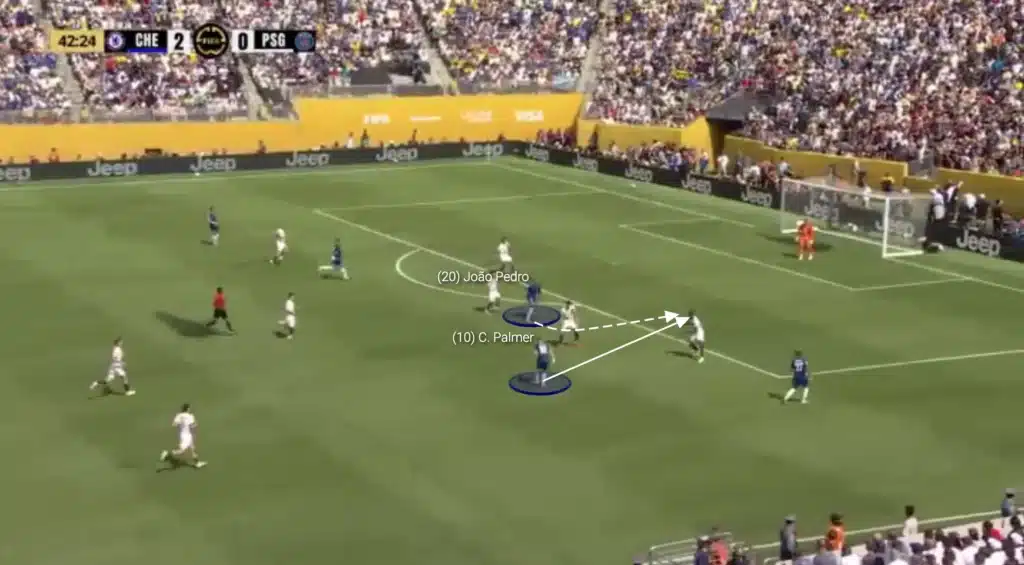
PSG’s Tactical Adjustments and Chelsea’s Response
PSG attempted adjustments in the second half. They rotated midfielders higher, tried to counter Chelsea’s wing threat, and aimed for more final-third penetration. But Chelsea remained disciplined. Their defensive shape shifted slightly, with James and Cucurella staying deeper while Palmer dropped into midfield to overload central areas in possession.
Any momentum PSG built was snuffed out by well-timed blocks, interceptions, or quick transitions. Chelsea didn’t abandon their plan; they adapted to PSG’s changes without losing structure.
Defensive Solidity and Sánchez’s Key Role
The second half showcased Chelsea’s defensive maturity. PSG created a few half-chances, but rarely tested Sánchez with high-quality opportunities. The Chelsea goalkeeper was excellent — not just with his saves, but with his role in build-up and counterattacks. He completed nine successful long passes out of 26 attempts — several of which led directly to breakaways.
In settled defense, Chelsea kept 4–5 players inside the box during PSG’s attacks, blocking crosses and cutting off cut-back lanes. It was a complete defensive performance, underpinned by individual focus and collective discipline.
Strategic Long Balls and Timing of Forward Runs
Chelsea’s long-pass strategy wasn’t random — it was rehearsed and deliberate. The key was in the timing of the runs. Players like João Pedro and Palmer only initiated their sprints once the press had committed and Sánchez had shaped to pass. This meant that by the time the ball landed, PSG’s backline was isolated — often in 4v4 scenarios — and Chelsea had runners breaking in behind with momentum.
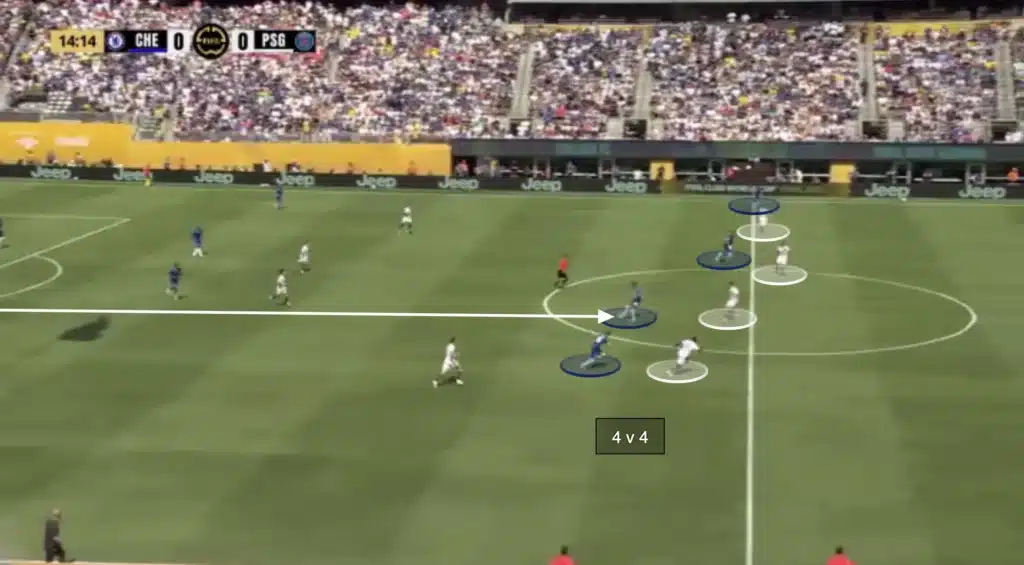
The result? Continuous danger in transition and constant psychological pressure on PSG’s defenders.
Conclusion: A Tactical Masterclass from Maresca’s Chelsea
Enzo Maresca’s Chelsea produced a performance of exceptional tactical clarity and execution. They absorbed PSG’s strength — high pressing and attacking width — and turned it into a weakness. With a disciplined mid-block, targeted transitions, and intelligent positioning, Chelsea neutralized PSG’s stars while maximizing their own attacking potential.
Cole Palmer’s two goals and an assist were a product of both individual quality and a system designed to expose space. João Pedro’s running, Sánchez’s composure, and the team’s collective understanding of moments all contributed to a well-earned title.
The final whistle marked more than just a trophy — it signaled Chelsea’s emergence as a tactically evolved side under Maresca, capable of outthinking even the most dominant sides in world football.
